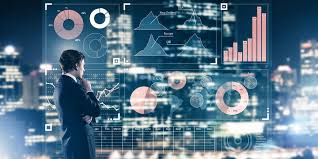Is ML changing process analytics? – By Aditya Abeysinghe
 Process analytics
Process analytics
Process analytics uses data from current processes of a business to analyze and identify how it could predict future processes of a business. For analytics, different sources of data and different types of data could be used. Insights can be derived using different types of process analysis. Business decisions can be made using output of these analytics which help businesses to improve their business processes.
Why use analytics?
There are different types of business process analytics. One type of analytics is descriptive analytics and this type analyzes historical data to describe current trend of a business process. This way a business can find where issues have occurred, the historical trends of a business process, and how current business trends have changed from that of past trends. This method enhances businesses to gain information from data and make decisions.
Another type that is used in analytics is predictive analytics. Predictive type analyses past data and can predict future trends based on the data. By predicting trends, a business can identify products, customers, and marketing it should focus to enhance profits. This reduces costs, time, and risks of serving customers who have less turnover and producing products with less revenue for a business.
The use of machine learning
In the early days of business analytics, only queries on data were used as analyses were mainly by descriptive analysis. The issue with this method is that queries on data do not learn over new data. Therefore, the output is always based on a predefined algorithm. However, businesses often require analysis that cannot be queried with known querying methods. Machine learning-based models are used for analysis which cannot be queried and when the method for analysis should self-adapt.
 Machine learning (ML) models use various processes to learn from previous computations. The process used to map output from inputs by some models is using algorithms used for training. Some models use processes at computation which are often difficult to be explained. These models are often used to create links between a large number of inputs to produce outputs.
Machine learning (ML) models use various processes to learn from previous computations. The process used to map output from inputs by some models is using algorithms used for training. Some models use processes at computation which are often difficult to be explained. These models are often used to create links between a large number of inputs to produce outputs.
Benefits of ML
As ML models can detect links in data, these models are used to find hidden trends. The output can be used to find typical connections between inputs but when digging into the result, more insights could be found. These connections can be used to find issues related to factors such as brand value, growth of a category of a product or a service compared to other categories, and sales over a period of time compared to other products. This reduces cost and risks of a business by focusing on complicated factors which are often hidden.
Various models can be built using ML. For example, to classify data, either classification-based methods or clustering-based methods can be used. These ML methods can be used in algorithms to build models to custom needs of a business’s processes. When not using ML, the method used to process data is often not predefined. For example, clustering of data is often not possible with traditional methods. Therefore, several unrelated processes are often necessary to process these needs.
Image courtesy: https://cio.com/







